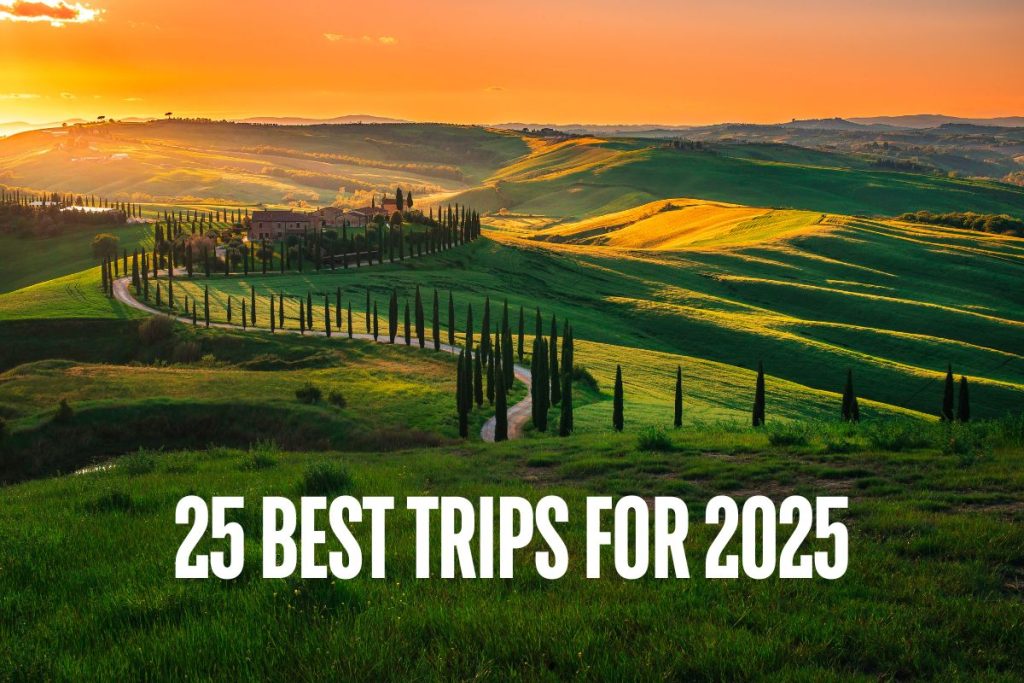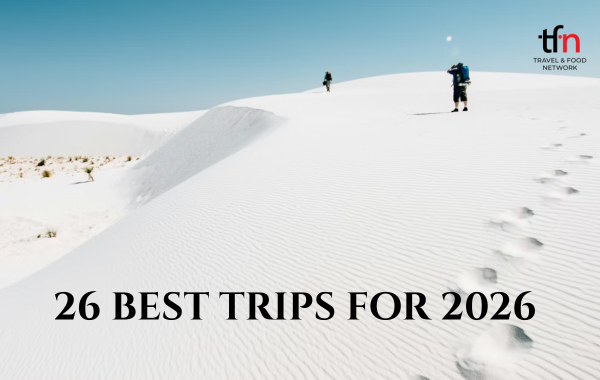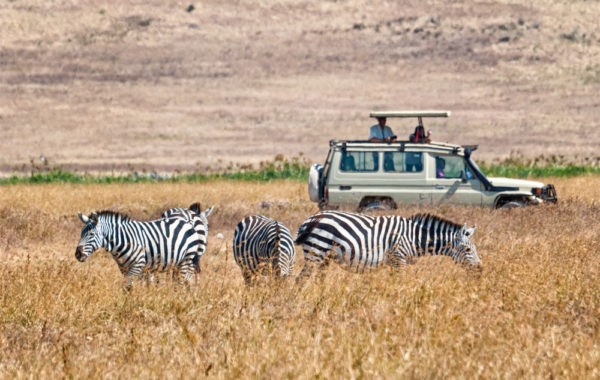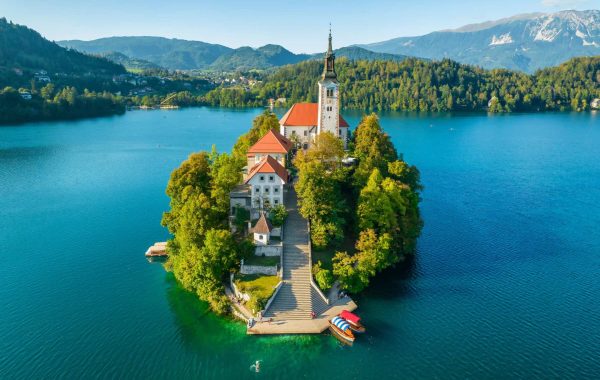A carefully selected list of offbeat destinations in your favourite countries that steer clear of cities grappling with over tourism.
Destinations worldwide are facing a new challenge: striking a balance between welcoming travelers and managing the surge of visitors. After a long pause during COVID restrictions, many places reliant on tourism eagerly opened their doors, only to find themselves overwhelmed by an influx of tourists exceeding pre-2019 levels. This rise in overtourism not only disrupts local communities and natural ecosystems but also contributes to pollution and strains infrastructure.
Sustainable travel, at its core, is about being mindful of the impact our journeys have on the environment and the destinations we explore. It’s about making thoughtful choices that prioritize the long-term well-being of these places. From the way we travel to the activities we engage in, adopting a conscious approach to our adventures ensures that we maximize the benefits while minimizing the negatives.
For 2025, Travel and Food Network has curated a list of offbeat destinations in the most-visited countries of last year, offering enriching experiences without the overtourism challenges of popular hotspots. Join us on a journey that embraces mindful travel and meaningful discovery.
1. USA East Coast: Consider Philadelphia instead of Washington D.C, or New York City
When planning an East Coast trip, consider Philadelphia and its scenic countryside as a refreshing alternative to the iconic but over-crowded cities of Washington, DC, and New York. Philadelphia offers a rich historical experience, from Independence Hall and the Liberty Bell to charming Old City and its vibrant arts scene. Cultural gems like the Philadelphia Museum of Art and its iconic “Rocky Steps” cater to history buffs and art lovers alike. Beyond Philly, the Pennsylvania countryside offers peaceful escapes with rolling hills, quaint towns, and attractions like Longwood Gardens and the Brandywine River Museum. Philadelphia blends urban history with rural charm, providing a balanced and crowd-free experience.
2. USA West Coast: Pick California’s Mammoth Lakes over Big Sur
While California’s iconic Highway 1 draws millions each year, overtourism and extreme weather and wildfires increasingly impact Big Sur. As an alternative, Mammoth Lakes in the Eastern Sierra offers a captivating, crowd-free experience. This year-round paradise features abundant hiking trails, clear alpine lakes, and top-notch fishing in summer, while winter transforms Mammoth Mountain into a skier’s dream. Beyond outdoor adventures, Mammoth Lakes boasts a welcoming community, diverse dining, and easy access from Los Angeles and San Francisco. For those seeking a tranquil escape, Mammoth Lakes provides a thrilling alternative to Big Sur’s coastal bustle amidst California’s stunning mountain landscapes.
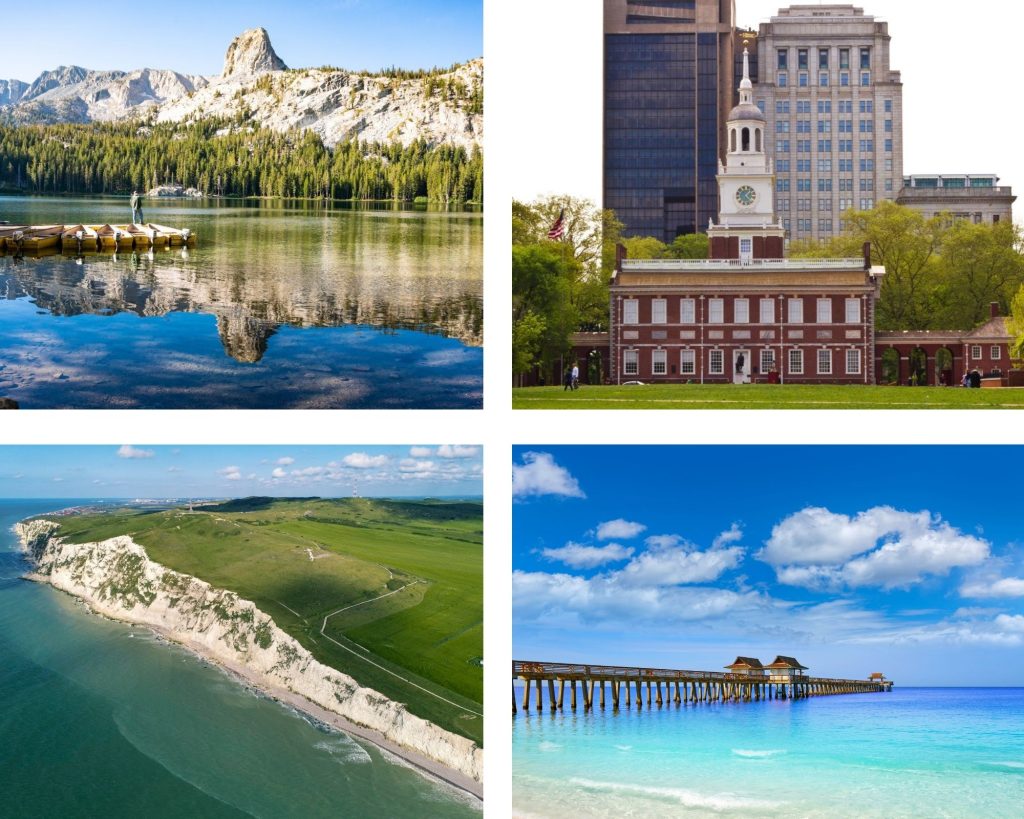
3. Florida (USA) : Visit Naples or Jacksonville instead of Miami
Naples (sometimes called “Mini-Miami”) and Jacksonville in Florida offer compelling alternatives to the bustling and often overcrowded Miami. Naples, with its luxury resorts, world-class golf courses, and serene beaches, provides a tranquil yet upscale escape. Its vibrant downtown, featuring fine dining and boutique shopping, complements its reputation as a sophisticated retreat. Meanwhile, Jacksonville offers a laid-back charm with its sprawling coastline, diverse outdoor activities, and rich cultural scene. Visitors can enjoy its vibrant art districts, scenic parks, and family-friendly attractions. Both cities deliver unique experiences without the challenges of Miami’s overtourism, allowing for a more relaxed and enjoyable getaway.
4. France: Consider Côte d’Opale instead of Paris or Normandy
With overtourism straining iconic sites like Mont-Saint-Michel in Normandy and the Louvre in Paris, Côte d’Opale offers a peaceful alternative with vintage charm, golden beaches, and stunning natural beauty, away from the tourist crowds. Named by French painter Édouard Lévêque in 1911 for its iridescent light, this 120km stretch from the Belgian border to Baie de Somme features a kaleidoscope of green hills, blue seas, white-chalk cliffs, and rolling dunes. Visitors can hike or bike along scenic cliffs, explore WWII sites, enjoy family-friendly beaches, and savor local treats like artisan beer, French frites, and fresh seafood. The Côte d’Opale’s shifting tides and dramatic vistas provide an unforgettable coastal escape.
5. Italy: Opt for Tuscany over Venice, Portofino, or Capri
With Venice introducing entry fees, Portofino fining for overcrowded selfie spots, and Capri limiting boat access, popular Italian destinations are taking steps to address overtourism. For a more relaxed and eco-friendly experience, Tuscany offers a picturesque alternative with its focus on sustainable tourism. Grosseto leads green tourism efforts in Europe, and Maremma National Park is known for its eco-friendly initiatives like renewable energy, plastic-free beaches, and local products. Visitors can explore Maremma’s golden beaches, green hills, and trails for biking, walking, or horseback riding. Highlights include Castiglione Della Pescaia, Giglio Island’s hiking and scuba spots, and the relaxing Saturnia Hot Springs, showcasing Tuscany’s commitment to sustainability and natural beauty.
6. Greece: Visit Naxos instead of Athens, Santorini or Mykonos
With visitor caps at the Acropolis and cruise limitations in Santorini and Mykonos, Naxos offers a tranquil alternative for those seeking to avoid crowds. As the largest Cycladic island, Naxos boasts long, crystal-clear beaches and lush landscapes, along with historical gems like Portara, the ancient ruins of an unfinished Apollo temple. Beyond its natural beauty, Naxos delights with its rich culinary traditions, featuring fresh vegetables, meats, olives, and honey from its fertile lands. Combining Cycladic charm with a relaxed pace, Naxos is perfect for experiencing authentic Greek island life without the crowds.
7. Austria: Discover Graz Instead of Hallstatt
The picturesque Austrian town of Hallstatt, known for inspiring Arendelle in Frozen, has introduced measures like view-obstructing barriers to reduce tourist crowds. For a more relaxed experience, visit Austria’s vibrant second-largest city, Graz. Dubbed the “Capital of Culinary Delights,” Graz offers a laid-back lifestyle with a Mediterranean touch. Enjoy outdoor dining in the historic Old Town, listen to street musicians, and savor fresh, local flavors. Highlights include the Graz Food Festival and The Long Table of Graz, where visitors can indulge in the region’s best produce, meats, and baked goods from passionate producers.

8. Portugal: Visit Madeira Instead of Sintra
If you’re planning a trip to Portugal, consider Madeira over Sintra, especially during the crowded summer months. Sintra, with its UNESCO World Heritage sites, has struggled with the influx of tourists, creating congested streets that disrupt local life. In contrast, Madeira offers a scenic escape with lush landscapes and crystal-clear seas. Known for its vibrant flowers and year-round spring-like climate, Madeira is ideal for outdoor enthusiasts. Explore the island’s levadas, historic streets of Funchal, or enjoy boat rides along the scenic coastline. Madeira also boasts excellent leisure boating and scuba diving facilities, while Porto Santo offers golden beaches, thalassotherapy, and golf, making it perfect for relaxation and adventure.
9. Spain: Consider Segovia, Cuenca and Toledo Instead of Barcelona Seville, or Menorca
In response to overtourism, Barcelona has raised its tourist tax and limited cruise arrivals, while Seville plans to charge entry to Plaza de España, and Menorca’s Binibeca Vell has added barriers to protect private areas. For a quieter experience in Spain, consider the World Heritage Cities of Segovia, Cuenca, and Toledo. Segovia features a stunning Roman aqueduct and historic Jewish quarter, Cuenca is known for its Hanging Houses and mix of ancient streets and modern art, and Toledo captivates with its blend of Christian, Muslim, and Jewish history along with its stunning architecture and panoramic views. These cities offer rich culture and history away from the crowds.
10. Peru: Visit the Amazon Basin instead of Machu Pichu
Consider exploring Peru’s Amazon Basin instead of the iconic but heavily regulated Machu Picchu. Due to overtourism, Machu Picchu now enforces strict entry times and a four-hour visit limit, closing by 5:30 pm daily. In contrast, the Amazon Basin offers a journey into the heart of the world’s most biodiverse rainforest, where ancient ecosystems and indigenous communities remain largely untouched. This vast, sweltering expanse harbors more plant and animal species within a single hectare than entire European countries. Visiting the Amazon Basin means encountering unparalleled natural beauty and a unique sense of discovery, away from the crowds.
11. United Kingdom: Explore Suffolk, Norfolk instead of Cornwall or Cotswolds
As Cornwall and the Cotswolds face rising visitor numbers and measures to manage overtourism, Suffolk and Norfolk offer equally beautiful landscapes and a more relaxed experience. Covering over 9,170 km² of coast and countryside, these eastern counties have much to explore, from areas of outstanding natural beauty and protected nature reserves to charming market towns and villages. Suffolk and Norfolk feature a National Park with 125 miles of lock-free waterways, scenic trails, and cycling routes, creating ample space for outdoor adventures. Visitors can also discover hidden gems within quaint towns, riverside walks, and long sandy beaches at resorts like Great Yarmouth—perfect for a tranquil getaway amidst England’s rural charm.

12. Croatia: Pick Papuk Nature Park in Slavonia over Dubrovnik
Dubrovnik’s “Respect the City” campaign has introduced guidelines including bans on walking around in swimwear, driving without special permission, eating and drinking around cultural monuments and climbing on the city walls. For a quieter, equally stunning Croatian escape, consider Papuk Nature Park in Slavonia. This UNESCO-recognized geopark features ancient forests, clear lakes, and rugged mountains. Start at Jankovac Forest Park, where trails wind through beech woods, past lakes, and up to the 35-meter Skakavac waterfall. Rent a canoe or bike for scenic routes, or visit Duboka Adrenaline Park for ziplining and climbing. Further north, explore the ruins of Ružica Castle overlooking the vibrant Hercegovac Lake.
13. Hawaii: Consider Kauai Instead of Oahu and Maui
To protect its unique ecosystems, Hawaii is limiting visitor numbers, with a proposed $25 “green” fee for tourists. If you’re seeking a serene alternative to bustling Oahu and Maui, head to Kauai, the “Garden Island.” Kauai, Hawaii’s oldest island, boasts lush volcanic landscapes, jagged cliffs, deep valleys, and the impressive Waimea Canyon, often called the “Grand Canyon of the Pacific.” While Kauai’s 73,000 residents share the island with over 400,000 wild chickens—a quirky reminder of its untamed charm—the island itself remains largely untouched by human development. About 70% of Kauai’s dramatic scenery is accessible only by air, making a scenic flight the perfect way to take in its vibrant cliffs and valleys. A quick 40-minute hop from Oahu, Kauai promises an unforgettable adventure amid Hawaii’s most pristine landscapes.
14. Czech Republic: Visit Moravia instead of Prague
To curb the effects of overtourism and reduce the toll of nightlife on locals in the city, Prague has proposed a ban on rowdy stag and hen party costumes. For a unique experience, venture to Moravia and Silesia, where Czech heritage shines through UNESCO sites, folklore, and breathtaking landscapes. Moravia offers four UNESCO treasures: the Kroměříž chateau and gardens, Olomouc’s Baroque plague column, Brno’s Functionalist Villa Tugendhat, and the sprawling Lednice-Valtice Complex. Adventure seekers will love the Moravian Karst with its 1,000 caves and Macocha Abyss. Dive into local traditions in Moravian Slovakia and Moravian Wallachia, or explore Ostrava’s technical monuments and the industrial heritage of Zlín, the former Baťa shoe empire.
15. Japan: Consider Tohoku instead of Kyoto
Consider visiting Tohoku in Japan instead of the overtouristed city of Kyoto. While Kyoto, a small historic city with a population of 1.5 million, draws over 70 million visitors annually, Tohoku remains an untouched gem. Just a three-hour train ride from Tokyo, Tohoku comprises six northern prefectures on Honshu and offers pristine forests, scenic gorges, ancient temples, and vibrant festivals—yet it attracts less than 2% of international tourists. You can explore the Michinoku Coastal Trail, symbolizing the region’s resilience after the 2011 tsunami, or enjoy uncrowded ski resorts like Appi Kogen, which regularly sees some of the world’s heaviest snowfalls. Tohoku’s rich culture and natural beauty make it a perfect alternative for those seeking a quieter, more authentic Japanese experience.
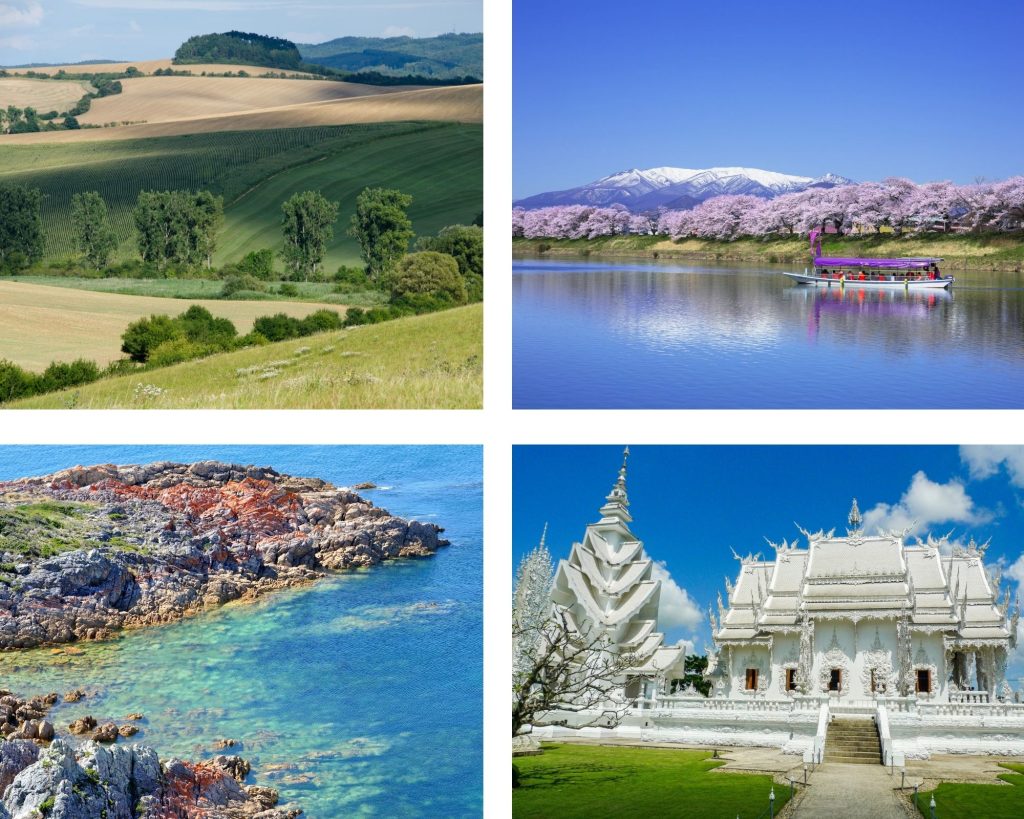
16. Thailand: Visit Chiang Rai instead of Maya Bay
Maya Bay, made famous by the Hollywood blockbuster The Beach, was closed in 2018 to restore its natural ecosystem after being overwhelmed by thousands of tourists daily. Although it reopened in 2022, restrictions remain to protect the restored coral and marine life, with limited visits and no swimming allowed. In contrast, Chiang Rai, the former capital of the Lanna dynasty, offers a tranquil experience with its historic temples, expansive tea plantations, and bustling night markets. Highlights include the royal temple of Wat Phra Kaew, the Navel City Pillar, and the Mae Fah Luang Art and Cultural Park.
17. Australia: Consider Northwest Tasmania instead of the Great Barrier Reef
While the Great Barrier Reef attracts diving and snorkeling enthusiasts worldwide, it faces ongoing threats from rising sea temperatures, pollution, and tourism-related damage, leading to coral bleaching and ecosystem decline. In contrast, North West Tasmania offers a scenic and often overlooked getaway, filled with charming towns, stunning beaches, and pristine forests. From the white sands of Boat Harbour to the historic town of Stanley with its iconic geological feature, “The Nut,” and the scenic trails of Rocky Cape National Park, this region provides a wealth of off-the-beaten-path experiences for nature lovers and explorers.
18. Germany: Explore Freiburg instead of Berlin
Consider exploring Freiburg instead of Berlin for a more sustainable and tranquil experience. Berlin, while culturally rich, has faced challenges with booming tourism, leading to short-term rentals displacing residents and local services shifting towards tourists. In response, the city has introduced restrictions and guidelines to promote eco-friendly tourism. Freiburg, on the other hand, is a vibrant university town known as the gateway to the Black Forest. Embracing sustainable living, it’s green both in its appearance and practices, with over 40% of the city covered in woodland. Powered by renewable energy and committed to climate goals, Freiburg offers scenic walks, bike-friendly paths, and efficient public transport, making it a perfect destination for eco-conscious travelers.
19. Africa: Botswana instead of Kenya
While Kenya’s Masai Mara and Tanzania’s Ngorongoro Crater are iconic safari destinations, their popularity has led to overcrowding, with hundreds of vehicles often competing for wildlife views. For a more secluded and immersive experience, consider Botswana’s Okavango Delta—a breathtaking oasis that offers a remarkable encounter with Africa’s wilderness. This UNESCO World Heritage site, fed by rivers from Angola, fans out into the Kalahari Desert, creating a unique ecosystem that is home to Africa’s “Big Five.” Conservation efforts have revived this sanctuary, once threatened by hunting. A mokoro (dugout canoe) safari guided by locals lets travelers quietly explore the delta’s waterways, where vibrant kingfishers, hippos, and hadada ibises create a captivating atmosphere. The Okavango Delta offers a tranquil, respectful alternative to crowded safari spots while showcasing Africa’s preserved wilderness.
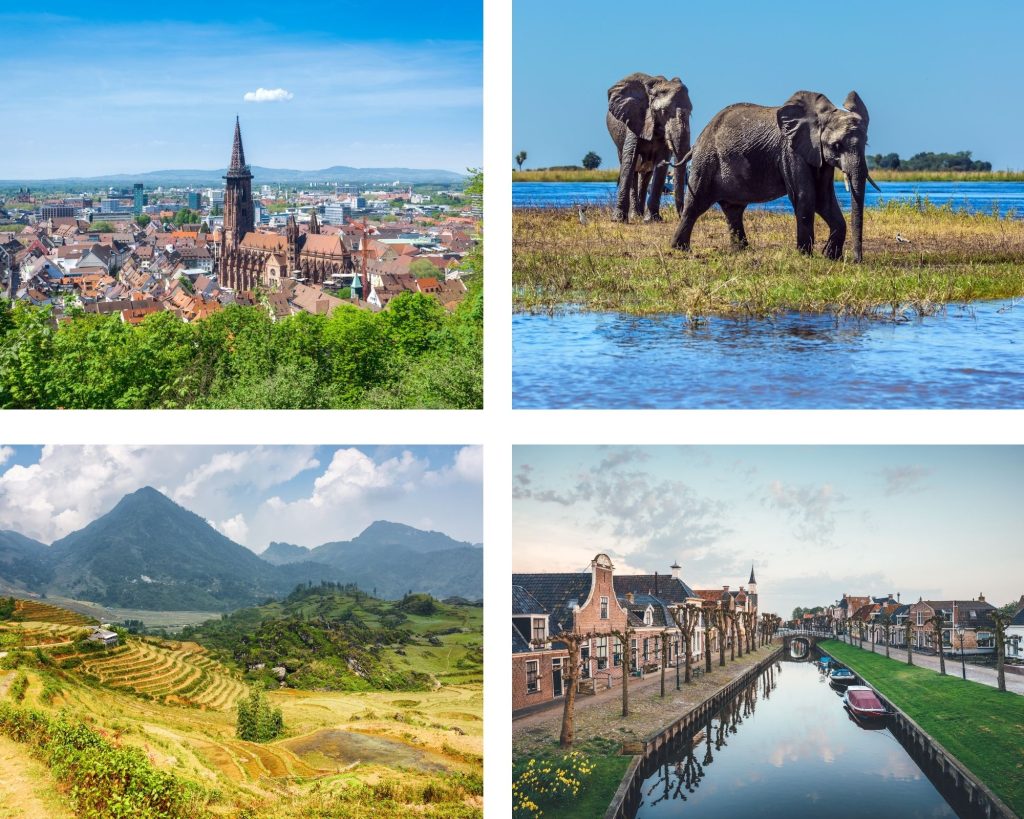
20. Netherlands: Explore Friesland as an Alternative to Amsterdam
As Amsterdam tightens tourism policies by limiting river cruises and restricting new hotel construction, Friesland offers a peaceful alternative. Leeuwarden, the capital of Friesland and 2018’s European Capital of Culture, is a cultural haven known for its annual flower market and ceramics museum. This historic town, birthplace of M.C. Escher and Mata Hari, showcases Friesland’s distinct identity as a Dutch province with its own language, flag, and traditions. Visitors can explore unique experiences like mudflat hiking on the Wadden Sea, canal pole-vaulting, and enjoying Frisian sugar bread flavored with cinnamon, all while immersing in the region’s rich heritage.
21. Vietnam: Opt for Hoang Lien Son instead of Hanoi
Consider exploring the Hoang Lien Son region instead of bustling Hanoi for a more nature-focused experience in Vietnam. While Hanoi’s iconic “Train Street” has become a victim of overtourism, leading authorities to crack down on this popular yet crowded attraction, Hoang Lien Son offers a refreshing escape into Vietnam’s northwest mountains. Beyond the gateway town of Sa Pa, this region is home to Vietnam’s highest peak, Fansipan, and remains largely untouched, with scenic trekking routes and stunning landscapes in Hoang Lien Son National Park and Muong Hoa Valley. Visitors can experience the warmth of local culture by staying with ethnic minority groups like the Hmong, Red Dao, Tay, and Giay, and enjoy sustainable trekking adventures with Sapa Sisters, a venture led by local Hmong women.
22. Indonesia: Explore Sumba or Flores instead of Bali
In an effort to curb unruly tourists, Bali has introduced a tourist tax, highlighting the impact of its popularity. In contrast, Sumba offers a quieter escape with pristine beaches where wild horses and buffalo roam, and villages that preserve traditional culture. Visitors can explore these communities, shop for handcrafted ikat, or surf the island’s crystal-clear waves before unwinding at luxury resorts like Nihi Sumba. Flores, on the other hand, is a haven for nature lovers and adventurers. As the gateway to Komodo National Park, it boasts unspoiled landscapes and some of Indonesia’s best dive sites. Beyond its waters, Flores is home to Kelimutu National Park, famous for its volcano and three vibrantly colored crater lakes. With its hot springs, caves, and natural wonders, Flores provides a truly immersive experience, far from the crowds of Bali.
23. Malaysia: Pick Redang over Penang
In response to tourist behavior negatively impacting residents, Penang became the first destination in Southeast Asia to ban short-term rentals like Airbnb. In contrast, Redang offers a more exclusive experience with its pristine beaches, crystal-clear waters, and excellently preserved coral reefs. The Redang archipelago consists of nine islands that form a marine park ideal for snorkeling and diving enthusiasts. Redang caters to an upmarket crowd with resort-style accommodations and its own airport, providing convenient access from Kuala Lumpur and Singapore. Visitors can enjoy the tranquility of Redang’s resorts, explore the vibrant marine life, and soak in the scenic beauty that sets it apart as a sophisticated and relaxing alternative to the bustling crowds of Penang.

24. Philippines: Opt for Bohol instead of Boracay
Consider visiting Bohol instead of Boracay for a more balanced and sustainable island getaway. In 2018, Boracay faced severe environmental issues due to unregulated tourism, leading to a six-month closure to address sewage problems threatening the island’s ecosystem. In contrast, Bohol offers an equally enticing experience with its lively diving spots, luxurious resorts, and unique attractions like the famous Chocolate Hills. Alona Beach, with its white sands and vibrant coral reefs visible even from the surface, provides a relaxing escape without the overwhelming crowds. The beach’s bars offer great cocktails and live music, maintaining a laid-back vibe that sets it apart from the bustling party scene of Boracay.
25. Ecuador: Visit Isla de la Plata instead of Galapagos Islands
While the Galapagos Islands are famous for their unique wildlife and pristine landscapes, overcrowding has led to strict regulations and increased entry taxes enforced by the Galapagos National Park Service, making it a more expensive and tightly regulated destination. On the other hand, Isla de la Plata, offers a similar experience with its diverse marine life and bird species, including blue-footed boobies, albatrosses, and frigate birds. This island provides a chance to explore rich wildlife, pristine beaches, and scenic trails without the hefty price tag or intense regulations, making it an ideal alternative for nature lovers and adventurers.
For latest travel news and updates, food and drink journeys, restaurant features, and more, like us on Facebook or follow us on Instagram. Read more on Travel and Food Network
Trending on TFN
Discovering Those Eastern Sierra Wonders: Road Trip Routes to Mammoth Lakes
The Countryside of Philadelphia: A Guide to Road Tripping through Brandywine Valley and Valley Forge
A New Yorker at heart, an unapologetic anglophile, national parks explorer and former head of National Geographic publishing in India, Ritika is the Global Editor for Travel and Food Network and leads all journalism across platforms, including news, digital, videos, and social media. She writes features focused on narrative storytelling, industry trends, destinations, culinary travel, and how-to advice and is an advocate for sustainable travel. You can follow her on Instagram @newyorkeratheart


